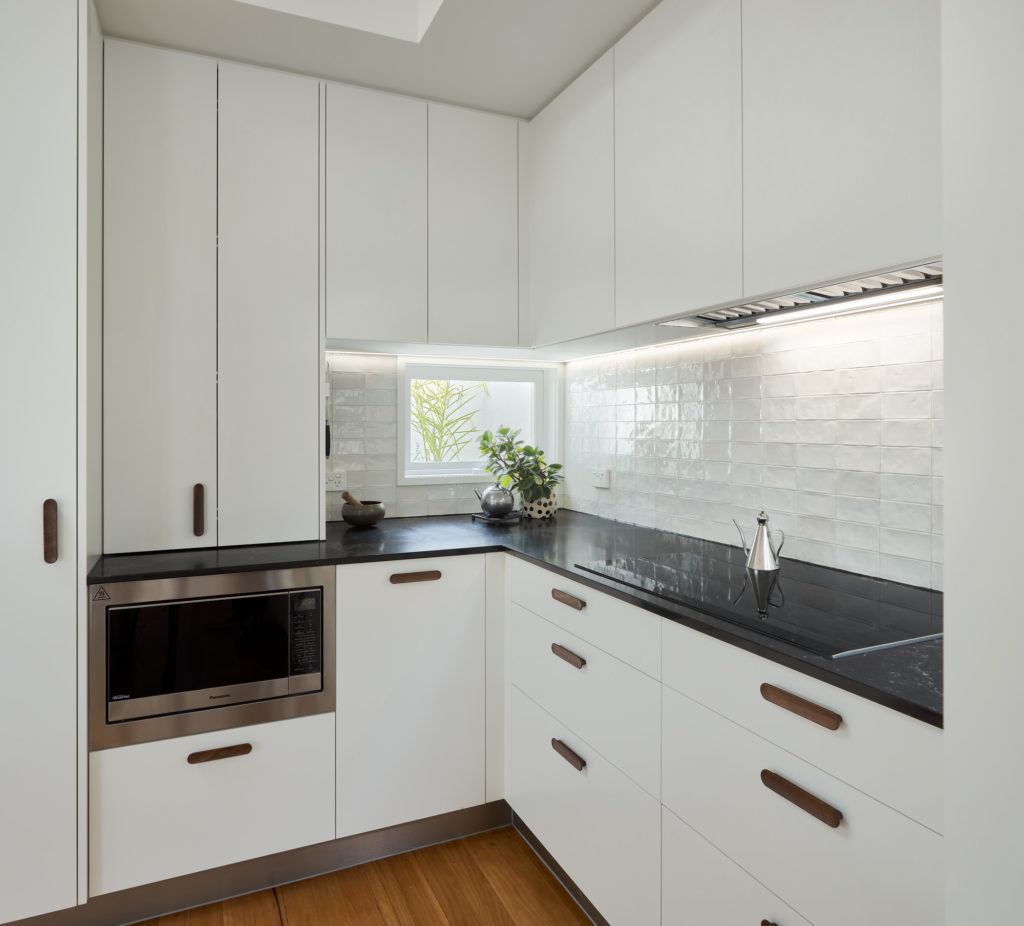What Factors Affect the Cost of Kitchen Cabinets?
As an experienced kitchen renovation company, we’ve found the biggest question on every homeowner’s lips when choosing their kitchen cabinets would have to be ‘how much is it going to cost’. Unfortunately, as there are so many factors which can affect the cost of kitchen cabinets, this question can be very difficult to answer before your kitchen design has been finalised.
To provide some insight as to why providing preliminary cabinet costings can be a difficult process, here’s an overview of the various factors that can influence the cost of kitchen cabinets.
Custom vs stock cabinets
When selecting kitchen cabinets, you’ll have the option between custom (or semi-custom) and stock cabinets.
As a general rule, custom cabinets cost significantly more than stock cabinets—and for good reason. Stock cabinet manufacturers provide a limited selection of cabinet styles, sizes and designs. This approach allows them to minimise manufacturing costs and pass on the savings to consumers. While that’s great, it does also come with some downsides.
Stock cabinets are often mass-produced with very little in place in terms of quality control. The manufacturing process is also largely focused on cost-minimisation rather than build quality, so while your new kitchen may seem great for a year or two, it’s not uncommon to start noticing a few issues from there on. The other major downfall of stock cabinets is the lack of flexibility in terms of design. Stock cabinets are only available in very specific design combinations and dimensions, which may not always be suitable for the individual project.
In contrast, custom or semi-custom cabinets can be tailored to suit the individual kitchen and the homeowner’s personal preferences. In many cases, custom cabinetry will be only feasible option that can accommodate the preferred layout and design features while maximising the available space.

Finish options
You’ll be spoiled for choice when it comes to your cabinetry finish with options including laminate/melamine, vinyl wrap, acrylic laminate, polyurethane 2-pac, timber veneer or solid timber.
Here’s a quick run-down on how these compare in terms of cost and aesthetics:
- Laminate/melamine: Only suitable for flat profile cabinets, laminate is usually the most affordable option. Manufactured by compressing plasticised sheets of paper together and laminating them to an MDF or particle board, they’re very durable and available in a wide selection of colours and finishes.
- Vinyl wrap/Thermo-laminate: Still on the more affordable end of the scale, vinyl wraps are applied to the substrate material using a thermal vacuum-sealing process to produce a seamless join-free finish. While they can be suitable for various cabinet profiles, they can be vulnerable to heat, making them unsuitable for some kitchen applications.
- Acrylic laminates: More expensive than laminates, acrylic laminates are manufactured by mounting and laminating an acrylic foil to the substrate material which is great for achieving a high-gloss, mirror-like finish.
- Polyurethane (poly) 2-pac: A hardened paint finish that’s on the more expensive end of the scale (around 40% more than standard laminate), you’ll have complete freedom to select your chosen colour hue and finish. 2-pac is also ideal for routed cabinet profiles, such as Hamptons-style cabinets.
- Timber veneer: Also on the higher end of the price scale, timber veneer involves applying thin layers of real timber to a substrate material to produce the same look of timber for a lesser cost.
- Solid timber: The best performer in terms of durability, solid timber is also the costliest cabinetry option.

Design options
Aesthetics and functionality are undeniably important factors of kitchen design; however, your design choices will influence the cost of kitchen cabinets.
Opting for flat profile cabinets is usually the most cost-effective option, while door styles which require routing or embellishment will cost more.
In terms of functionality, drawers are typically more expensive compared to cupboards, with open shelving proving the most cost-effective option. Integrating appliances into your cabinetry or opting for upgraded features such as automated, touch or soft-closing mechanisms and in-built or pull-out organisers can also add to cabinet costs.
Finally, the quality of your cabinetry hardware such as your hinges and glides will also affect cost. Hardware sourced from prominent brands will often cost more, but will typically last much longer.
Considering a kitchen renovation? We’d love chat! Drop into one of our showrooms across Melbourne to see what we can do.






Leave a Reply